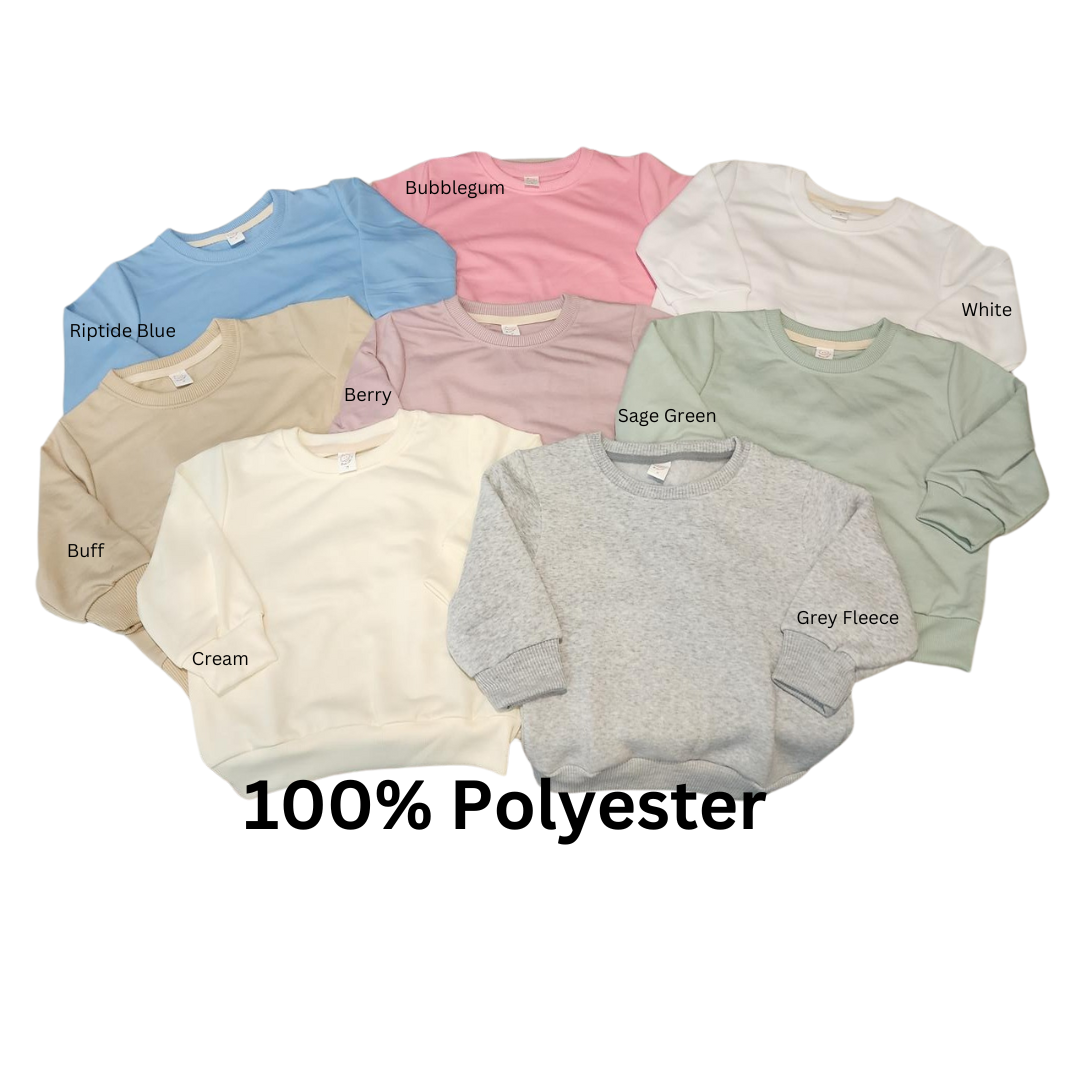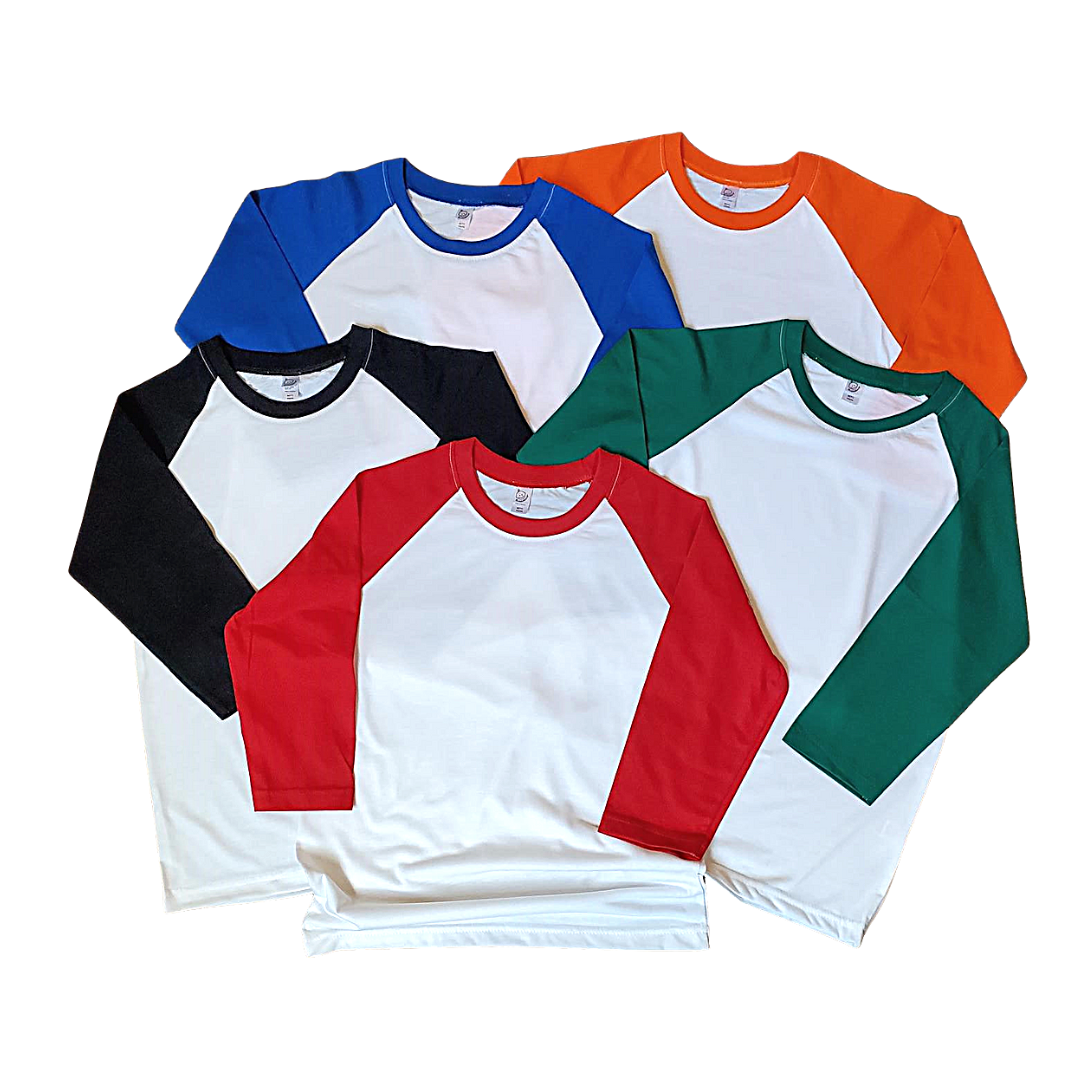Essential Tips for Successful Sublimation on Polyester Blends

Sublimation has become a favorite method for creating customized apparel. Known for its vibrant colors and durability, sublimation offers unmatched quality when done right. But great results don’t happen by chance — they start with understanding your materials and mastering your technique.
Polyester blends are the perfect canvas for sublimation. Whether you're working with sublimation blanks like shirts, sweatshirts, or blank rompers or handling bulk orders for businesses, optimizing your process is essential for success. This guide will walk you through everything you need to know, from preparing your blanks to troubleshooting challenges.
Why Polyester Blends Are Perfect for Sublimation

If you’ve caught yourself thinking, "What can you sublimate on?" polyester blends are an excellent choice. Unlike cotton or other natural fabrics, polyester fibers can bond directly with sublimation ink. This chemical reaction is what makes sublimation designs so vivid and long-lasting.
Polyester blends offer the perfect balance of functionality and comfort. Unlike 100% polyester, which can feel too stiff or synthetic, blended fabrics such as polyester combined with cotton or rayon provide a softer feel while maintaining the durability required for sublimation.
- Bright, Vibrant Colors: Sublimation ink becomes part of the polyester fibers, creating colors that won’t fade over time. This is especially valuable for items like sublimation blanks shirts or bubble rompers, where the design needs to stand out.
- Soft and Comfortable Feel: Blended fabrics, like those with 65-95% polyester, offer the durability of polyester and the softness of cotton or rayon. This blend makes them ideal for blank women’s clothing or everyday apparel.
- Versatility Across Products: Polyester blends work well for everything from sublimation sweatshirts to baby clothes, giving businesses a wide range of options to offer customers.
When it's time to tackle sublimation projects, polyester blends are the clear winners, yielding high-quality and long-lasting designs. From fashionable streetwear to bulk orders, this material rises to the challenge.
Preparing Your Blank Apparel
Preparation is a step you can’t skip when working with sublimation blanks. Even the best designs can turn out dull or uneven without proper prep. Taking the time to prepare your apparel ensures a smooth printing process and a flawless result.
Pre-Washing for Better Results
Pre-washing your sublimation blank removes any factory residue or oils that might interfere with the ink transfer.
Use a mild detergent and skip fabric softeners, which can leave behind a coating that blocks sublimation ink. For garments like sweatshirts, ensure they are completely dry before pressing to avoid moisture issues.
For businesses handling bulk orders, consider pre-washing all blanks in advance to save time. It’s a small step, but it prevents potential mishaps later.
Removing Lint and Moisture
Lint may seem harmless, but even tiny fibers can ruin a print. Use a lint roller to clean your apparel thoroughly before pressing. Moisture can also cause ghosting or uneven colors, especially in thicker garments like sweatshirts. A quick pre-press with your heat press (5-10 seconds) removes any moisture and flattens the fabric for better printing results.
Proper preparation ensures that your blanks are ready for a smooth transfer. This step minimizes errors and guarantees vibrant, professional-looking results when done correctly.
Setting Up Your Sublimation Equipment
The proper setup makes all the difference in achieving professional-quality results. Whether you’re working with a single sublimation blank or mass-producing apparel, having the right tools and settings is essential.
Heat Press Settings
Your heat press plays a crucial role in achieving high-quality sublimation results. Proper technique ensures even ink absorption and vibrant prints. Before pressing, make sure the sweatshirt is smooth and free of moisture for the best transfer results.
Factors like pressure and pressing time can impact the outcome when working with different polyester blends. A light pre-press can help create an even surface and improve ink bonding.
For best results, always check the product details on our website for specific guidance on pressing techniques. Testing a sample blank before starting large orders can help ensure consistency and quality in your final prints.
Protective Materials
Using blowout sheets, parchment paper, or Teflon covers prevents ink from transferring to your heat press platen. These barriers also protect your blanks from smudges or ink bleed, ensuring every piece comes out clean and professional. For multi-layered garments, such as hooded sweatshirts or bubble rompers, protective materials help maintain even pressure.
Printing Techniques for Vibrant Designs
Sublimation is all about precision and mastering the proper techniques to produce bold, crisp designs. So, what do you need for sublimation? To ensure professional results, start with high-quality ink, a calibrated heat press, and premium blanks.
What sets exceptional designers apart is not the equipment they own but their ability to make that equipment sing. For success that truly pops, follow these essential steps to get there.
Prepare Your Heat Press
Before you begin, ensure your heat press is fully preheated to the correct temperature. Inconsistent heat can lead to dull or uneven prints, so allow the press to warm up thoroughly to maintain even heat distribution throughout the process. For best results, confirm that the heat press is calibrated to apply even pressure across the entire garment.
Secure Your Transfer Paper
One of the most common mistakes in sublimation is shifting transfer paper during pressing, which leads to ghosting or blurred designs. Use heat-resistant tape to secure the paper firmly to your sublimation blank. Double-check alignment and taping to prevent unwanted movement for curved surfaces, like rompers or sweatshirts. A stable setup ensures your designs transfer cleanly and without distortion.
Adjust Your Printer Settings
Achieving vibrant designs starts with the correct printer settings. Always use ICC color profiles tailored to your printer, ink, and transfer paper. This ensures the colors on your screen are accurately reproduced on your garment.
- Sublimation Printer: A reliable printer ensures consistent output and detailed designs.
- Sublimation Ink: High-quality ink produces vivid, fade-resistant colors that last.
- Transfer Paper: Premium transfer paper supports clean, sharp transfers, avoiding smudges or uneven prints.
- Heat Press: A calibrated press ensures consistent pressure and temperature for flawless results.
Using subpar supplies can result in dull prints, smudges, or even failed transfers, so always prioritize quality. For new designs or unfamiliar blanks, run a test print on a scrap piece. This extra step allows you to confirm alignment, adjust colors if necessary, and fine-tune your press settings before committing to your final product.
Importance of High-Quality Ink
High-quality ink ensures vibrant colors that don’t fade over time. If you’re investing in premium sublimation blank shirts or sweatshirts, don’t cut corners on ink quality—it’s the foundation of a successful print. Low-quality inks often lead to dull results or prints that fade quickly after washing, so choosing trusted ink brands is a must.
Ensuring Color Accuracy in Your Design
Design accuracy is crucial for professional results. Always check your design for proper color profiles before printing. Use ICC profiles specific to your printer and ink to achieve the most accurate color reproduction.
Additionally, preview your design on screen to ensure it’s free from pixelation, unintended hues, or scaling issues. Secure your transfer paper with heat-resistant tape to prevent shifting during pressing, especially for small or curved blanks like bubble rompers. Double-check placement before pressing to guarantee your design is straight and aligned — critical when working with customized items for clients.
Common Sublimation Challenges and Fixes
Even the most experienced sublimation pros encounter challenges. Here’s how to troubleshoot the most common issues.
- Ghosting: No, we don't mean leaving someone 'on read' on social media. Ghosting occurs when the transfer paper shifts during pressing, leaving a shadow of your design. To prevent this, secure the transfer paper with heat-resistant tape and avoid moving the garment once it’s in place. Double-check the alignment before closing your press to avoid costly mistakes.
- Uneven Prints: Seams, zippers, or inconsistent pressure often cause uneven prints. A pressing pillow creates an even surface for items like sweatshirts or hooded garments, ensuring consistent heat and pressure across the entire design area.
- Preventing Dull Colors: If your prints lack vibrancy, check your heat press settings. Low temperatures or short pressing times may prevent the ink from fully bonding with the polyester fibers. Always confirm the polyester content of your blank apparel—higher percentages of polyester result in brighter prints.
A quick investigation usually pinpoints the problem, and soon, you'll be back on track, producing exceptional results with ease.
Post-Print Care for Polyester Garments

To maintain the quality of your designs, proper care is crucial. Provide clear instructions to your customers to help them preserve their garments.
- Wash Inside Out: This protects the design from friction and extends its lifespan.
- Use Cold Water: Gentle cycles with mild detergent prevent damage to both the garment and the print.
- Avoid Fabric Softeners: These can break down the bond between ink and fibers.
- Air Dry or Use Low Heat: High heat can damage sublimation prints, so air drying is the safest option.
Providing care instructions not only helps extend the life of the design but also enhances customer satisfaction.
Take Your Sublimation on Polyester Blends to the Next Level
Sublimation on polyester blends is more than just a printing process—it’s an opportunity to create durable, vibrant, and professional-quality designs. Success starts with using high-quality materials, like the premium blanks offered by Bubbakins Blanks. From sublimation blank shirts to rompers and sweatshirts, their products are designed to help you achieve flawless results every time.
By following the right preparation steps, mastering your equipment, and troubleshooting common challenges, you can elevate your sublimation projects to new heights. Bubbakins Blanks has the variety and quality you need to succeed.
JOIN US
Stay informed every step of the way—subscribe to our newsletter and never miss a beat!
100% FREE, Unsubscribe any time!


